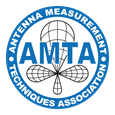John Aubin,ORBIT/FR Inc., November 2012
Specular patches comprising pyramidal absorber components are frequently used in anechoic chambers to suppress potential DUT coupling with the side walls, floor and ceiling of the chamber. However, these specular patches also interact with the incident field radiated by the source antenna, compact range reflector, or tapered chamber feed illuminating the chamber. If the specular patch reflects the incident field in GO fashion, then the reflected field is incident on the absorptive back wall and is sufficiently attenuated there, so that there is no significant degradation of the field uniformity in the Quiet Zone due to the reflected field. If, however, the chamber is long, and the grazing angle of the incident field on the specular patches is relatively low, “non-specular” reflections incident on the Quiet Zone will perturb the field, and accordingly will degrade the field uniformity. If the chamber is operating at high frequencies (e.g., above several GHz) and the distance between the Quiet Zone and side walls is significant in terms of wavelengths, then the “non-specular” reflections will not impact the field uniformity to a noticeable extent, as they are attenuated in free space while propagating from the specular patches to the Quiet Zone. If the chamber is intended for operation at VHF/UHF frequencies, as is prevalent in tapered chambers, then the “non-specular” reflections may be the dominant factor affecting the Quiet Zone uniformity. In this paper the measured reflectivity in a tapered chamber with pyramidal specular patches is presented, illustrating a significant rise of the reflectivity over a portion of the VHF/UHF bands. Thorough investigation has shown the source of the degraded reflectivity to be the specular patch. This effect has been confirmed by simulation, and is analyzed by modeling the specular area as a periodic structure. Replacement of the specular patches by wedges has materially improved the reflectivity in the chamber, as will be shown by comparative reflectivity measurement results. For the application under consideration, the coupling between the DUT and sidewalls was below the specified minimum and, thus, advanced coupling suppression techniques were not required. For more stringent coupling requirements, the use of the ORBIT/FR patented “Two Level GTD” technology (see, for example, [1-4]) is a good choice to minimize reflectivity and DUT/sidewall coupling simultaneously.
